EPIC BATTLE OF OLD IRON: 1994 HONDA CR500 VS. 2000 KAWASAKI KX500 VS. DARYL ECKLUND
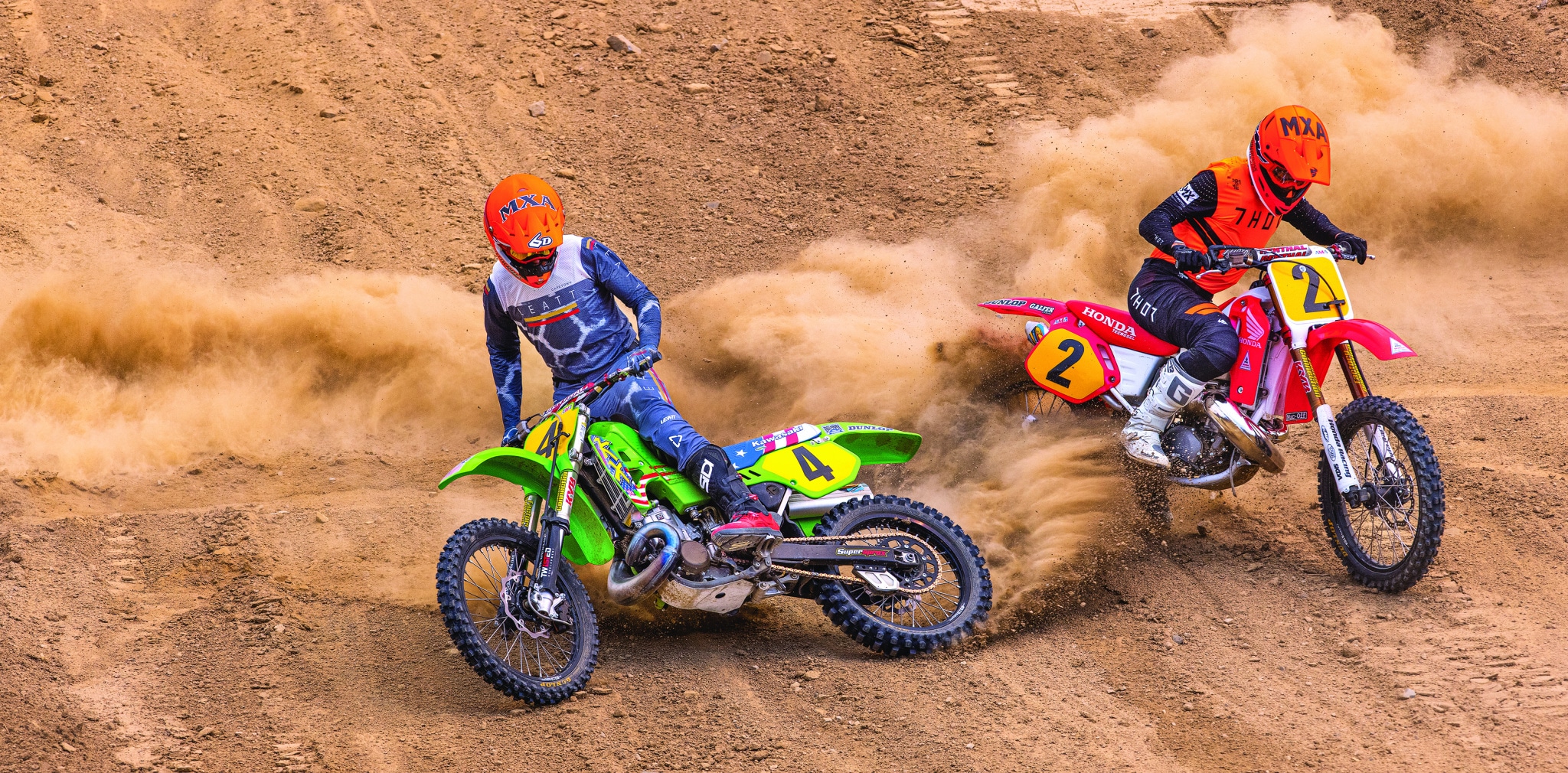
BY DARYL ECKLUND
It is surprising, but 500cc two-strokes have gotten more recognition over the last five years than they have in the past three decades. Why? There is a two-stroke revolution happening around the world. Every time production has halted on a two-stroke model, it instantly becomes a hot commodity. Let’s be honest, a decade ago you couldn’t get 10 cents on the dollar for a used KX500 or CR500. Now they are collector’s items that are in high demand with parts that are as rare as unicorn horns. Not even unlimited money can buy you parts for some old two-strokes. For most modern racers, the idea of a 500cc two-stroke is not the least bit appealing other than for nostalgia. Am I wrong?
I first started testing at MXA back in 2007 while I was racing the Supercross series. Even back then, I gravitated to two-strokes. I’m not really sure why. Maybe it was because I grew up on smokers. Those were the bikes I learned to race on. Even to this day, the YZ125 and YZ250 have been my bikes of choice out of the MXA arsenal. Nothing about a four-stroke has surpassed the fun factor of those bikes. It’s shocking that bikes with such old technology could still be so good.
I never got to race a stock production 500cc machine, as the AMA 500 National class had been phased out long before I turned Pro, and the last production 500 two-stroke rolled off the assembly line in 2004. I had no interest in riding a 500 anyway—even the idea of them scared me. The first time I saw one being raced in the Pro class was at the 2004 Mammoth Mountain Motocross by a guy named Richie Owens. He holeshot all the fastest 450cc four-strokes by a mile on the long uphill start at Mammoth. It was incredible. The old iron looked ancient in comparison to the new-age thumpers at the time.
My second contact with a 500cc machine was when Kurt Caselli coaxed me into racing my Honda CRF450 in the Open Pro class at the Adelanto Grand Prix, which was the scariest race I have ever done. I somehow led the entire first lap until a factory Kawasaki rider named Brian Brown passed me on a KX500 like I was standing still on a rough, fifth-gear straight. I was going so fast that it was unimaginable that anyone could go faster, but when Brian passed me, the draft of his KX500 nearly pushed me off the course. He won. I finished a terrified second place.
Eventually, there came a time when I got the assignment from MXA to ride a KX500 for a test. I didn’t want to ride it, but it was my job. I was the young buck at MXA back then and didn’t want to let my team down. Shockingly, it was one of the most fun days I’ve ever had on a dirt bike. Since then, I take every opportunity I can to swing a leg over a 500cc two-stroke.

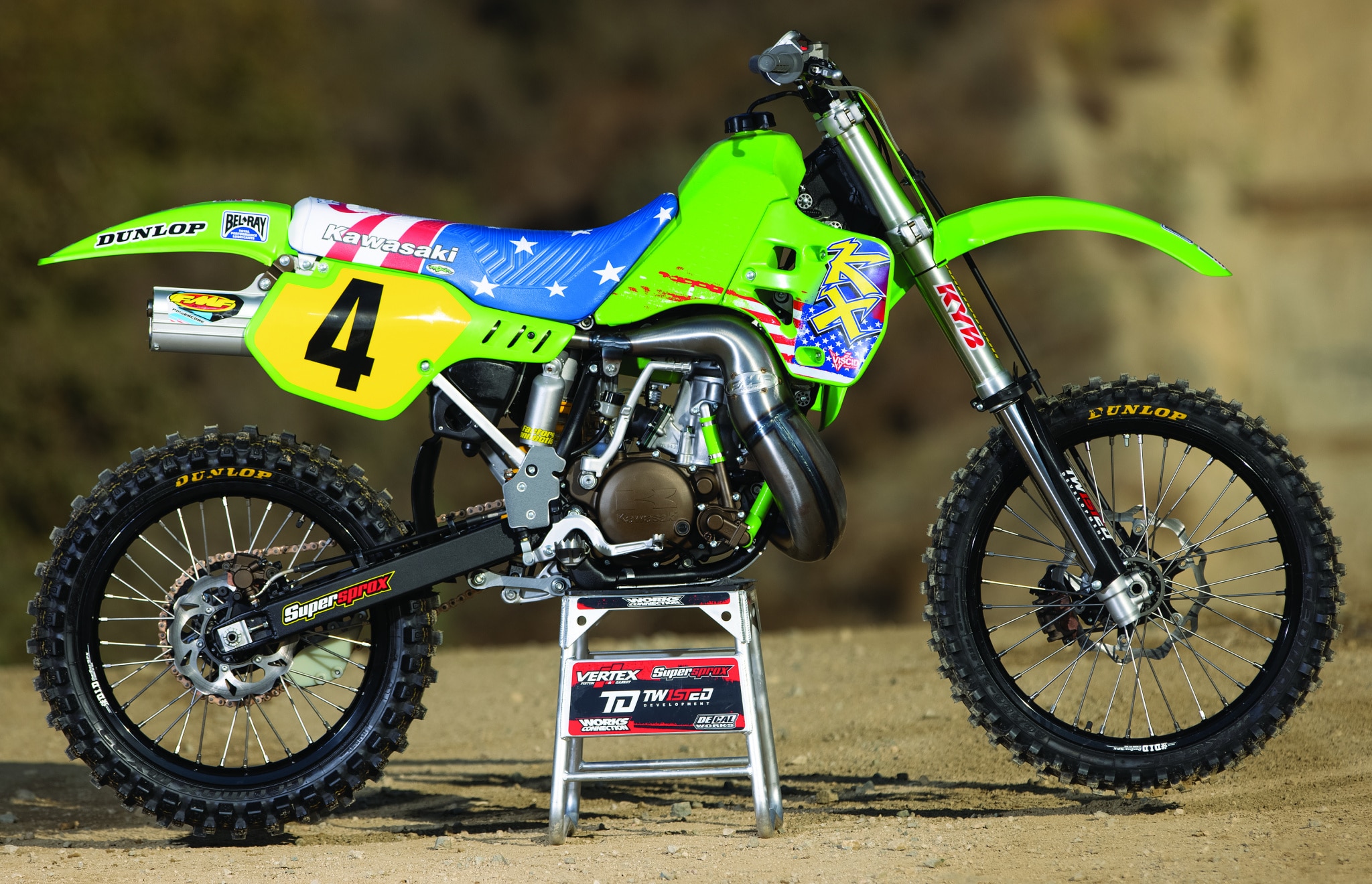
THE BIKES
Nathan Alexander, who was the team manager at the Muc-off Honda team in 2021, was the mad scientist who brought the 2000 Kawasaki KX500 and 1994 Honda CR500 to life. He went one step further while resurrecting these beasts by making the KX500 a replica of Jeff Emig’s 1996 MXDN machine and the CR500 into a replica of Jeff Stanton’s factory 1992 CR500.
When Nathan first got these bikes, they were in bad shape. No surprise, they were over 20 years old and hadn’t had the best of care (the KX500 was in boxes). An old project bike is harder to get back together than a 1000-piece jig-saw puzzle without the picture on the box to guide you. I have struggled many times with numerous unfinished projects in my garage. The only good thing about a box of parts is that it gives you a fresh perspective on the task ahead. It allows you to create the bike you want from the ground up.
Jamie Ellis at Twisted Development was a part of making this project come to fruition. He was the original owner of the box of parts and volunteered his expertise, his dyno and his race shop to get the bikes in running order. The two bikes took months to complete. Nathan and Jamie wanted the 500s to still have that old-school feel with a touch of new-age technology.
The biggest upgrades were to the front ends on both bikes with modern Kayaba forks that had been updated by Factory Connection. The Honda CR500 got A-Kit air forks from a 2018 CRF250 with EZE 22mm triple clamps from Australia (stock is 24mm). The front wheel and brakes were also off a 2018 CRF250. On the rear brake, Nathan used the stock CR500 caliper but took out the plunger and used CRF250-style internals. The engine was rebuilt with the cylinder and head cleaned up and a 1.5mm bigger piston to erase all the previous wear and tear. The only part of the CR500 engine that wasn’t new was the crank; they are difficult to rebuild, and they aren’t available anymore. It was decided that since it had lasted 28 years, it was probably good to go.
Nathan decided to use 2002 KX250 two-stroke forks and clamps on the 2000 KX500. The wheels were standard with updated D.I.D. rims and beefier spokes. The front brake used a standard caliper that is mated to a 2020 CRF250 master cylinder. The entire engine was gone through, with the cylinder and head being cleaned up.
Both of the bikes had Lectron carburetors, which Nathan assured us were extremely simple to use, and the jetting was spot-on. Both bikes’ transmissions were treated with Sano Metal rim finishes, along with FMF bolt-on power, VForce reeds, SKDA custom graphics, razor-sharp Pro Pegs pegs and Factory Connection suspension.
THE MATCH-UP
On the scale, the Honda CR500 came in 10 pounds lighter than the KX500 at 238.2 pounds. On the dyno, the two bikes had wildly different power curves. The CR500 power curve was extremely short and powerful, while the KX500 was broad and linear (revving almost 2000 rpm further at peak). The KX500 was the power king on the dyno at 58.78 peak horsepower, beating out the CR500 by 4 horsepower; it just took longer to get there. In the torque category, the CR500 offered 47.53 pound-feet of torque in comparison to the KX500’s 45.18 pound-feet.
For a two-stroke versus four-stroke comparison, the 2022 Honda CRF450 offers the most torque for a 450 four-stroke at 37.13 pound-feet of torque, which was 28 percent less than the 1994 Honda CR500. In the horsepower wars, the YZ450F offers the most four-stroke peak power at 58.56 ponies but was edged out by the KX500’s 58.78 horsepower. In the end, peak horsepower between the best production four-stroke and a discontinued KX500 was the same, while the torque of the old Honda CR500 had 28 percent more pure grunt. Holy two-smoke that is a lot.
On the track, the 500s felt the exact opposite of what the dyno told us they would run like. The Honda CR500 had a broad powerband, while the KX500 revved quick and needed new gears constantly. I was confused, to say the least. Did Jamie mix up the dyno charts? No. They were just that different feeling on the track.
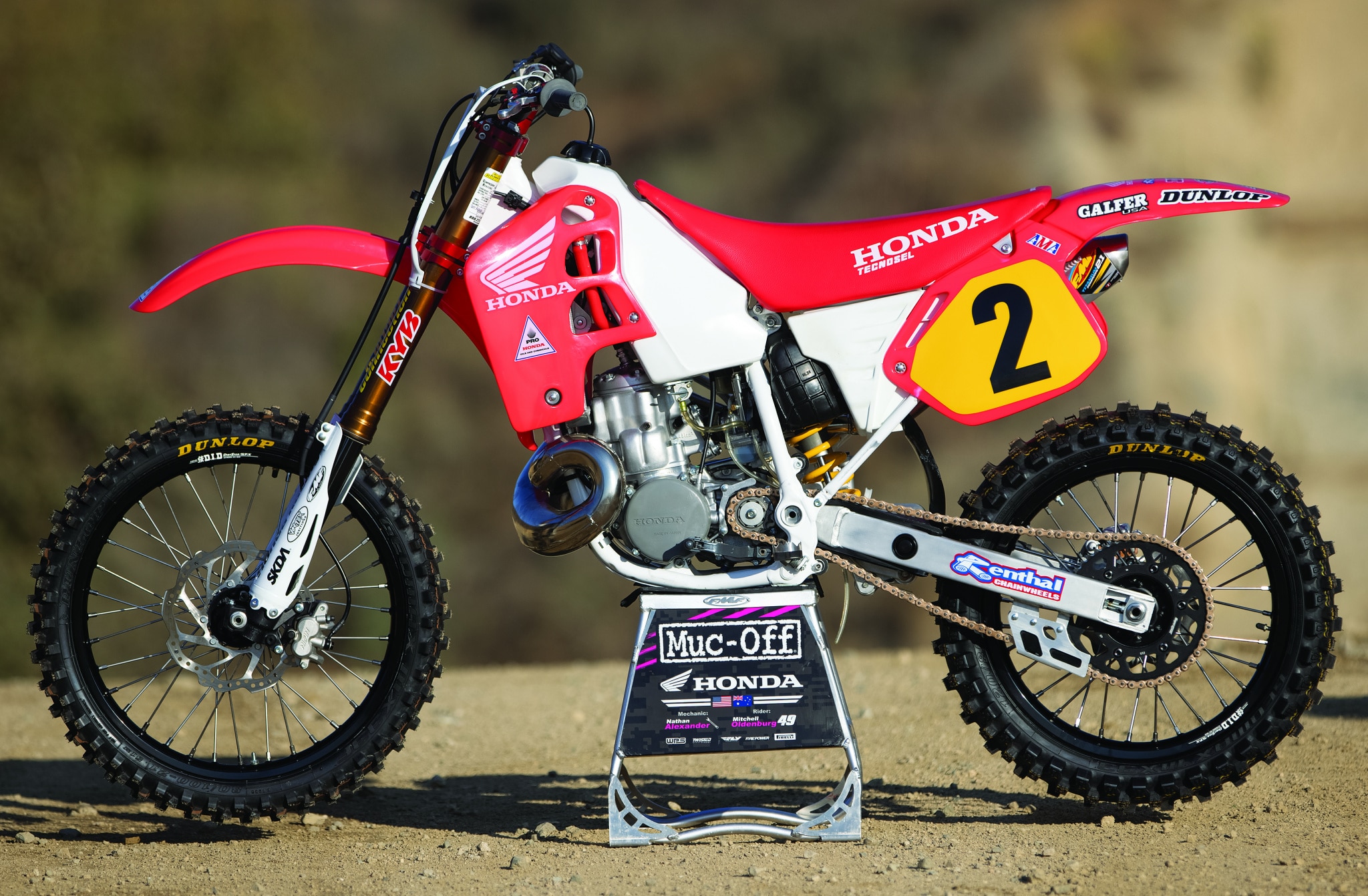
1994 HONDA CR500
I personally had never ridden a true-to-life Honda CR500 before. I have ridden plenty of CR500 engines shoehorned into new-age chassis‚ but it’s just not the same. I was shocked that the CR500 felt much more like a motocross-style bike than the KX500. This surprised me because all the big-name riders who build up 500cc machines to race the World Two-Stroke Championship seem to always pick the KX500. Not sure if this is more of a fluke than a thought-out decision.
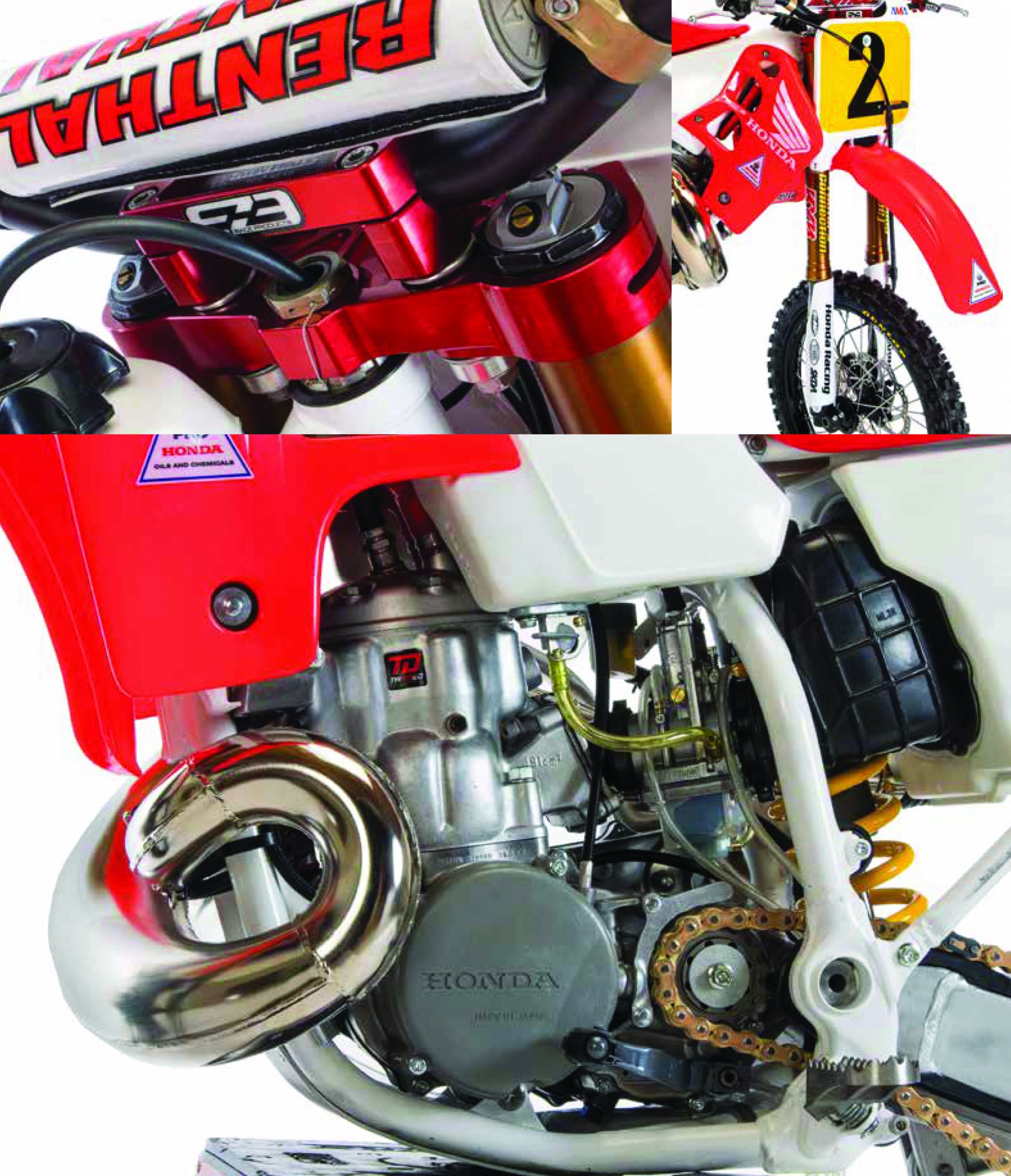
The CR500 chassis was very nimble. The cockpit was more motocross friendly. It turned better and was easier to jump. Even though the power curve on the dyno looked short-lived, on the track it seemed much broader. Maybe it was because I was able to ride a gear higher due to the powerful torque. I had my best lap times when I lugged the CR500 around the track in third and fourth gear. Once I stopped revving and started lugging, the feeling in my hands started to come back from the vibration and it was easier to ride around the rough Glen Helen track.
The bike cornered with precision and was impressive, to say the least. The Factory Connection suspension setup was on the soft side for faster riders, but through the chop and in the corners the setup was great. I just couldn’t slam into the face of jumps or absorb any hard landings or the forks would bottom pretty hard.
I expected the pipe springs to fly off and the bolts to come loose because that has been the norm anytime I ride 500s. It didn’t take long.
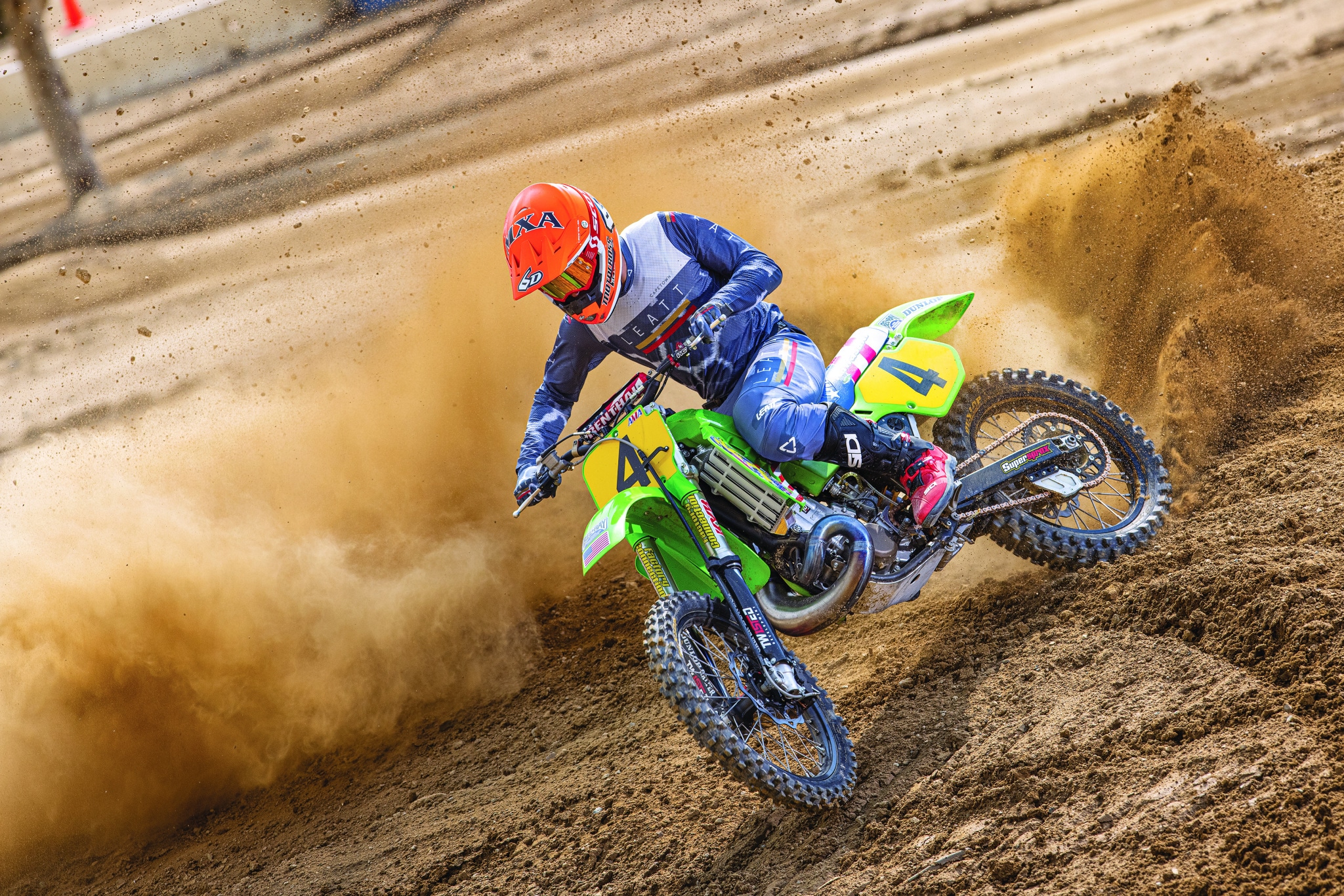
2000 KAWASAKI KX500
I feel like I am a KX500 aficionado, although I know I don’t have Jeff Ward’s credentials, Brian Brown’s heavy right wrist or Destry Abbott’s stamina to go 100mph down a whooped-out straight in the middle of Baja. I’ve never had to live with a 500cc two-stroke through a whole race season, but I feel like I have ridden these bikes more than most people who ever swung a leg over a dirt bike. How many times have you seen a KX500 hauling the mail on a motocross track? Rarely, other than Sean Collier. It is as though I was meant to be a 500 two-stroke racer. I was too young for it when I was in my prime, but I’m not too old for it now. This would be my dream bike if only I could find a way to keep the bolts from vibrating out.
On the track, the KX500 suspension and engine felt racier than the CR500’s. The forks were stiffer and the engine was more potent. It revved through its rpm range quickly, making the shift points close together. After some time on the bike, I learned how to ride it better by lugging the engine. Although it couldn’t be lugged as much as the CR500. I felt like I was shifting a lot on the big Glen Helen track. It felt weird after just getting off the CR500.
I was able to be more aggressive with the stiffer forks, but the KX500 felt taller and heavier, which made it less than an ideal handler. I had to be more precise with my body position to navigate around the track. To be honest, I had to do everything I could just to hold on coming out of corners. It gave me arm pump like crazy. It was fast. To ride this bike to its full potential takes a superhuman.
WHO WON THE 500cc OLD IRON SHOOTOUT?
It is hard to choose between two bikes that are two decades old, but I will say that Nathan hit the nail on the head as far as grafting on updated technology with the brakes and forks. They made a huge difference. Remember when we said Nathan and Jamie rebuilt everything but the crank on the CR500? Well, guess what? The vibration that made my hands numb got worse the longer I rode and eventually started to make my whole body go numb. I found that if I rode it in the right rpm range, I could balance it out to bring the vibration down. But, it turns out that the worst of the vibration came from the CR500 crank coming apart. This was just a hiccup, and I am not going to hold the death of a 21-year-old crank against the CR500.
Both bikes had their pluses and minus. The KX500 was lightning fast but hard to control at times. The CR500 power was smooth and precise, which added to its already agile handling. I’ve made no secret that I feel I was meant to race a KX500, so this is hard for me to say out loud, but the Honda CR500 was the best bike.
FINAL THOUGHTS
First, I want to thank Jamie and Nathan for resurrecting these relics of time. It was an honor to get in the saddle of the beasts. I loved riding these 500s much more than any factory bike or new production model. Some would say I am crazy, but after the hype of testing factory bikes wears off, they aren’t as fun to ride as you would think. Do I sound like a spoiled test rider? I am. I am numb to the fact that I get to test bikes for a living. Thankfully, this feeling has guided me to the bikes that bring me pure joy. These 500cc machines made me grin from ear to ear.


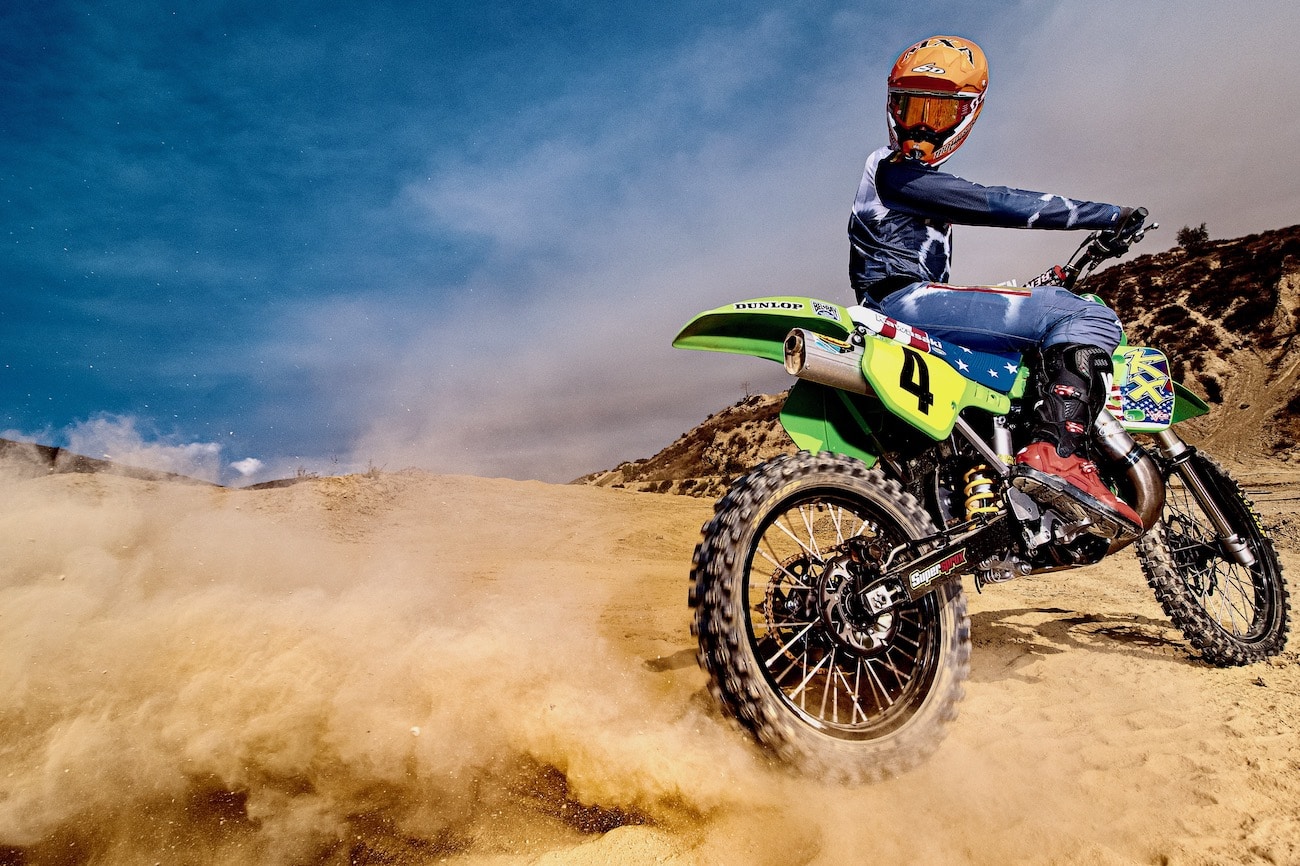

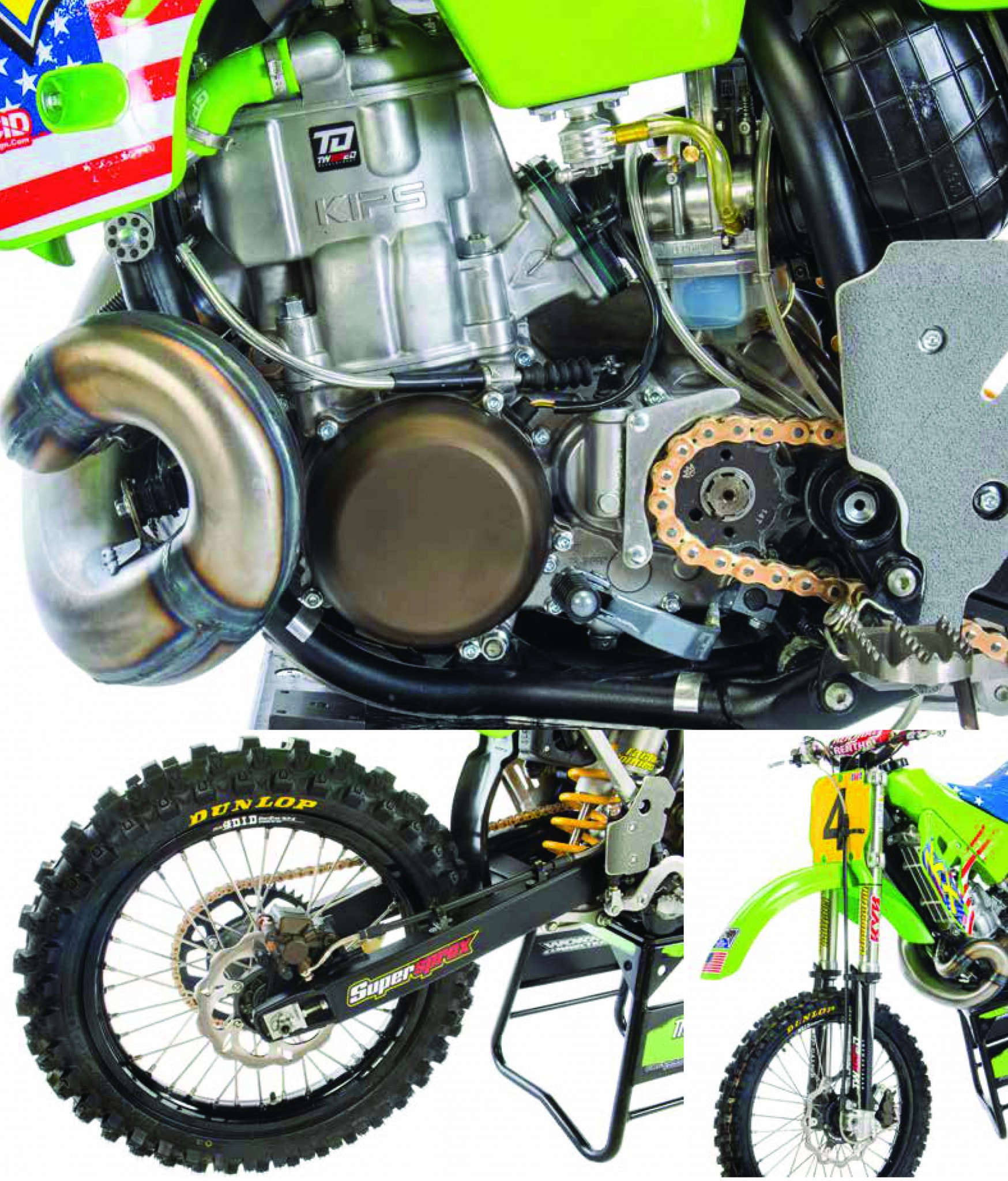



Comments are closed.